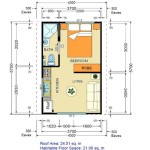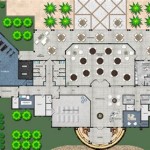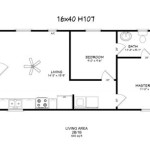Floor Plan For Small Home: Essential Aspects to Consider
Designing a floor plan for a small home requires careful planning and optimization of space to create a comfortable and functional living environment. Here are some essential aspects to consider when crafting a floor plan for your compact abode:
1. Define Your Needs and Priorities
Start by identifying your essential requirements and the desired level of comfort for your household. Consider the number of bedrooms and bathrooms needed, the size and layout of common areas, and any specific features or amenities you wish to incorporate.
2. Maximize Space with an Open Concept
Open concept layouts combine multiple functional areas into a single, open space. This eliminates walls and physical barriers, creating a more spacious and airy feel. By seamlessly connecting the living room, dining area, and kitchen, you can make a small home feel larger.
3. Optimize Natural Lighting
Natural light is a powerful tool for enhancing the sense of spaciousness. Incorporate large windows and skylights to flood the home with sunlight and create a bright and inviting atmosphere. This not only reduces the need for artificial lighting but also improves the overall well-being of occupants.
4. Utilize Vertical Space
Make the most of your vertical space by utilizing multi-level layouts, lofts, and mezzanines. These elevated spaces can provide additional bedrooms, storage areas, or even create a cozy reading nook without sacrificing floor space.
5. Efficient Storage Solutions
Storage is crucial in small homes, as clutter can quickly overwhelm the space. Built-in storage units, under-bed drawers, and hidden compartments can help keep belongings organized and out of sight. Consider multi-purpose furniture pieces that combine storage with other functions, such as ottomans with built-in drawers.
6. Smart Zoning and Room Separation
While open floor plans can create a sense of spaciousness, it's important to delineate different areas within the home for specific functions. Use dividers, screens, or partial walls to create separate spaces for sleeping, cooking, and entertaining without compromising the flow of the overall layout.
7. Outdoor Connection
Even in small homes, it's important to have access to outdoor space. A balcony, patio, or courtyard can provide a much-needed respite and a sense of connection to the outdoors. Consider incorporating sliding glass doors or French windows that blur the boundaries between indoor and outdoor living.
8. Consider Furniture Scale and Layout
Furniture selection and layout play a vital role in optimizing space in a small home. Choose furniture that is appropriately scaled to the size of the rooms and avoid overcrowding them. Opt for pieces with clean lines and a minimalist aesthetic that can visually expand the space.
9. Focus on Functionality and Flexibility
Every inch of space should serve a purpose in a small home. Consider furniture that can perform multiple functions, such as a sofa bed or a coffee table with hidden storage. Modular furniture can also adapt and change to suit different needs and occasions.
10. Seek Professional Advice
If you encounter challenges in designing a floor plan for your small home, don't hesitate to seek professional advice from an architect or interior designer. They can provide valuable insights, technical expertise, and creative solutions to optimize the space and create a home that truly meets your needs.

10 Small House Plans With Open Floor Blog Homeplans Com

10 Small House Plans With Open Floor Blog Homeplans Com

Plan 73931 Detached Guest House Or Tiny With Photos

Pin By Emily Smith On Small Home Planning House Floor Plans
Small Homes Top 5 Floor Plans Designs For Houses Architecture Design

Tiny House Floor Plans With Lower Level Beds Tinyhousedesign Design

Storage Ideas For Small Homes Dfd House Plans Blog

10 Small House Plans With Open Floor Blog Homeplans Com

Small House Floor Plans Country

Small House Plans And Design Ideas For A Comfortable Living








